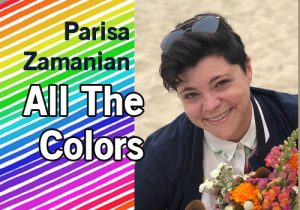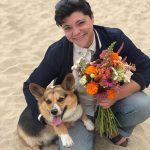Remembering Latisha King as Queer Resistance, Connection, and Joy
 CONTRA COSTA COUNTY, CA (Feb. 24, 2023) — Content warning: This piece contains mentions of gun violence, murder, and anti-trans and anti-Black violence.
CONTRA COSTA COUNTY, CA (Feb. 24, 2023) — Content warning: This piece contains mentions of gun violence, murder, and anti-trans and anti-Black violence.
Close your eyes and travel with me to February 16, 2008. I am sixteen and fidgeting with my folding chair in a cabin filled with friends and strangers from across the Bay Area on a Queer Youth Leadership Retreat in Marin. It’s our first morning after an evening of awkward adolescent glances, giggles, and the euphoria of being a group of queer teens without parental supervision. We are waiting for our next workshop to start, and after what feels like an eternity, our facilitators arrive. Their energy sobers us into attentiveness.
“Before we begin,” they announce, “you should know that a member of our community died two days ago.”
It was fifteen year-old Latisha King from Oxnard, California. Shot twice in the back of the head on February 12, 2008. She died on Valentine’s day. Murdered in her classroom, in front of her teacher and other students by a fourteen year-old boy that she had asked to be her Valentine a few days before.
Have you ever been struck with the realization that you are embattled in a war you don’t remember enlisting in?
We were already fighting anti-gay marriage bill Prop 8, anti-choice bill Prop 4, and now in a workshop educating us on the rights the protect us as queer students in California.
Latisha King was not protected. She was Black, biracial, queer, gender non-conforming, trans, and had been in the foster system. Her murderer had ties to white supremacist groups. The violence against her and the media commentary that followed were fueled by the intersections of racism, homophobia, transphobia, ableism, and classism.
Member of our community
Our group of intersectional queer youth did not personally know Latisha King, but we deeply felt our facilitators’ words: A member of our community died.
Since then, we have experienced many deaths. We grieve for people we do not know dying in cities we have never visited because members of our communities die from interpersonal and systemic violence every single day. We hold the queer community’s deep history of loss, and we anxiously read endless lists of anti-LGBTQ+ bills.
In my role as the Youth Program Manager and therapist at Rainbow Community Center, I hold heaviness and joy together. Our capacity to love is connected to our capacity to mourn. The queer community knows how to love, and we have plenty of experience with mourning, and we know that resistance is key to joy. Every Valentine’s Day, I mourn Latisha King and reflect on the act of resistance it is to experience queer joy, self-expression and community connection. Latisha King existed unapologetically as her most vibrant self. Rainbow’s Youth Program strives to create spaces for radical self-expression through our programs, events, and summer camp, because when we can be ourselves and feel truly connected, we are more protected. When one falls, we all fall, and together, we will all rise.
If you want to join our Rainbow Youth Programs community, follow our instagram, join our eBlast, or visit our website.

Parisa Zamanian
Parisa Zamanian (they/them) is a Bay Area born, mixed white/Persian, non-binary queer with a passion for baking, social justice, and sea otters. They are dedicated to working with intersectional LGBTQIA+ communities as the Youth Program Manager and Spanish Bilingual Associate Clinician at Rainbow Community Center.
